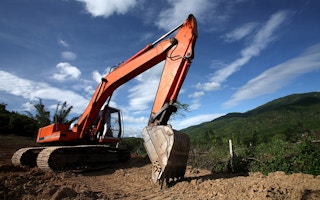While many giant development projects are taking place all around the world, often in environmentally well preserved locations, it is very rare for projects to take an ecological approach making use of existing natural systems. Despite the fact that advancements in engineering technology can lead to amazing designs, much more sustainable (and financially sound) outcomes could be achieved by making use of existing ecosystem services.
To continue reading, subscribe to Eco‑Business.
There's something for everyone. We offer a range of subscription plans.
- Access our stories and receive our Insights Weekly newsletter with the free EB Member plan.
- Unlock unlimited access to our content and archive with EB Circle.
- Publish your content with EB Premium.
Current development trends
Current development trends are highly dominated by a ‘destroy and rebuild’ approach. Indeed, most construction or land development initiatives rarely take an existing natural site and develop it in a way that actually utilise the ecosystem services and at the same time preserve as much of the terrain in its original state.
Modern societies have adopted the concept that it is easier to destroy and start from scratch through re-engineering. Countless examples would include aspects such as deforesting then reforesting; flattening the terrain then re-engineering a landscape; diverting water streams to then bring back new water features; changing coastlines then re-arranging the currents … Very often such practices come at greater cost and also damages the surrounding environment either directly or indirectly.
Practices that are destructive of the surroundings are deeply embedded in our development practices to the point that changing this mind-set is now proving very challenging.
An ecosystems approach
It is for a simple fact that natural ecosystems on Earth have stabilized over millions of years and have reached near optimum levels of efficiency. It is unlikely that we will be able to replicate this level of efficiency by trying to copy natural systems (for instance, through biomimicry).
There are many examples that illustrate the inefficiency of copying natural processes: the efficiency of flight (birds are much more efficient at flying then planes); solar panels are far less efficient than plants; purification of water takes enormous amounts of energy compared with what plants are able to do… In fact, at this point in time, we are still very far from being able to replicate the efficiency that natural systems can provide. Our ability to replicate natural systems is only at a very early stage with little progress being made.
Nature tends to always go towards systems stability that are most energy efficient: a water stream would flow using the easiest path; trees grow where conditions are optimum for their growth; landscape has been shaped by winds and water flows which reflect the nature of the terrain below.
“
With increasing environmental degradation worldwide, businesses that take an approach of preserving their natural surrounding are becoming the centre of attention. And this comes with all the business potential it implies
Aspects of nature that seem a hazard have actually been shaped by time according to surrounding parameters following a path of lower energy or lower entropy. Entropy is a thermodynamic term that describes the degree of disorder in natural systems.
Construction methods should make use of these predefined terrain features rather than re-engineer the landscape; because of this lack of consideration our development practices are both destructive and inefficient.
The business case
With increasing environmental degradation worldwide, businesses that take an approach of preserving their natural surrounding are becoming the centre of attention. And this comes with all the business potential it implies.
For instance, this is reflected in the hotel industry. Eco-tourism in Asia alone has been growing significantly over the past few years. Eco-hotels are becoming the new luxury trend, which many travellers are now seeking to escape to. These places offer an immersion back to nature that is unlike the artificially created comfort found in most luxury hotels. The loss of natural features in densely populated cities only serve to heighten the appeal of eco-hotels.
Other businesses are also catching on. This trend is starting to extend to private properties or offices which now increasingly use ‘urban greenery’ as a main selling point.
The future of comfort and even luxury will be re-defined as well-preserved environments offering fresh air, clean water and overall functioning ecosystems that are able to hold a certain degree of biodiversity.
Taking into account these trends, it appears that it makes good business sense to shift development models to ones that are more ecologically sound.
Using natural systems is also congruent to achieving greater efficiency, which is directly linked to better financial returns, from energy to water savings. Furthermore, the development costs can be brought down significantly by not having to re-engineer the land to the conventional extents which can take a significant portion of a development’s budget.
Some solutions
It is clear that part of the problem comes from a lack of initial planning. Some engineers and architects working on development projects rarely look into natural systems. They usually focus on the built elements instead.
This approach must be changed to systematically incorporate ecological elements to development projects. An initial site assessment helps identify ways to include such natural ecosystem services into the projects.
The current term of ‘sustainable design’ is very incomplete and does not really look into this approach. Indeed it is largely focused on reducing projects’ energy load following the ‘destroy and rebuild’ model.
A final word
The ecological development approach could really be the next human revolution. As with the industrial revolution of the 20th century, followed by the computer revolution, the ecological revolution could well be the next big 21st century change – and it is a much needed one.
While many current engineering projects are challenging in nature, we have proven that we can build tunnels below the sea, bridges in the sky, skyscrapers almost a kilometre high or even send people to the moon and beyond… However, a real new challenge would be to develop a large project that fully utilises the ecosystem and this remains to be seen.
The future of development should place a much greater focus on preserving the natural environment and making use of ecosystem services. We need to shift from the ‘destroy and rebuild’ to a ‘preserve and utilise’ development approach.











